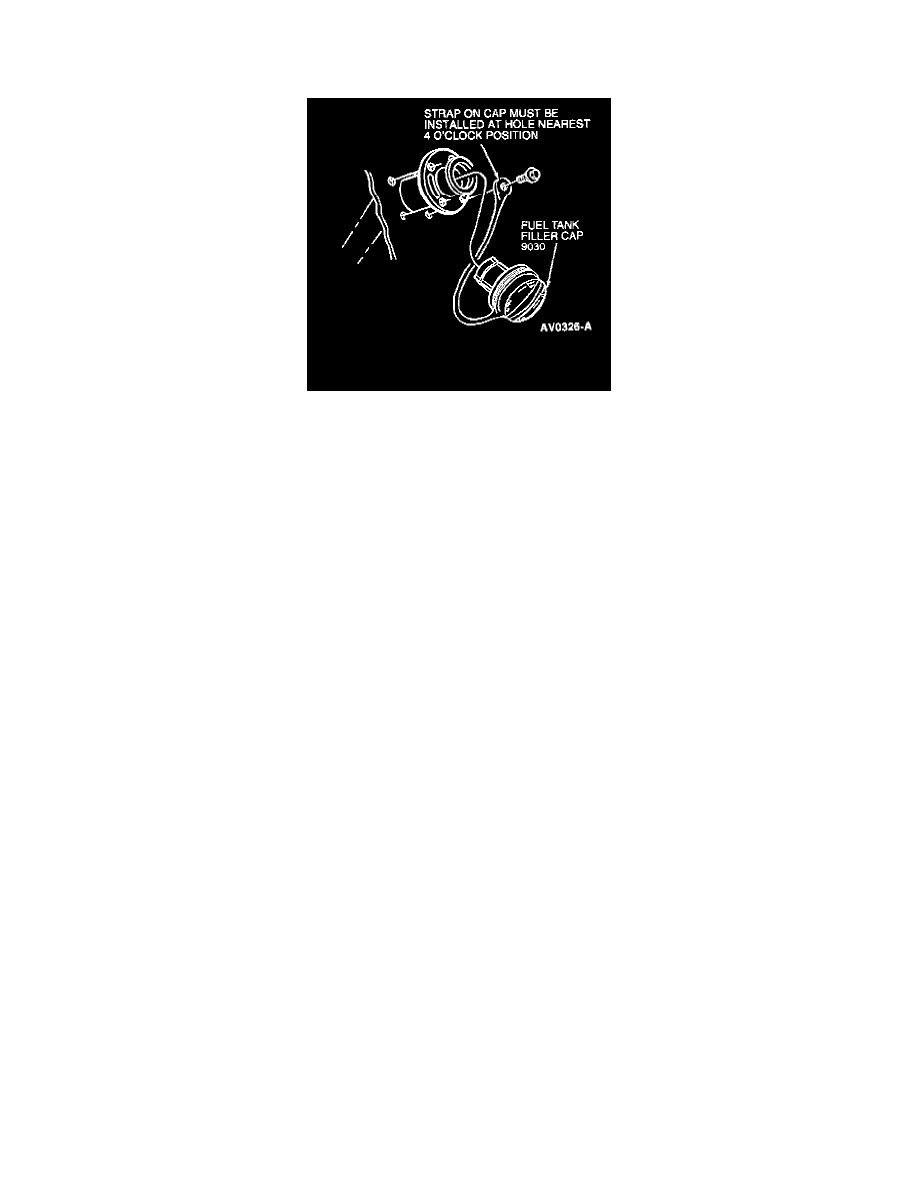Mustang GT V8-4.6L SOHC VIN X (1998)

Fuel Filler Cap: Description and Operation
Standard EVAP System (Federal)
WARNING: FUEL TANK MAY BE PRESSURIZED. TO REMOVE FUEL TANK FILLER CAP, ROTATE OVER ONE-HALF TURN
COUNTERCLOCK WISE. IF FUEL TANK FILLER CAP IS VENTING FUEL OR A HISSING SOUND IS HEARD, WAIT UNTIL THE
CONDITION STOPS BEFORE CONTINUING TO TURN THE FUEL TANK FILLER CAP. IF THESE PRECAUTIONS ARE NOT
FOLLOWED, FUEL MAY SPRAY AND CAUSE PERSONAL INJURY.
The fuel tank filler cap has the following characteristics:
-
A vacuum valve allows air into the fuel tank to replace fuel as it is used and opens after a vacuum of -3.4 kPa (-0.5 psi).
-
A pressure valve acts as a backup pressure relief valve if venting system is over pressurized or restricted. The pressure relief is 11 kPa (1.6 psi).
-
Damage to the fuel tank filler caps or contamination that stops the pressure vacuum from working may result in deformation of the fuel tank. Care
should be taken to use a proper fuel tank filler cap in good working order.
-
The fuel tank filler cap is a threaded screw-on design with a pre-vent feature that allows the fuel tank to vent for the first three-quarter turn before
unthreading.
-
Fuel tank filler caps are attached to the vehicle with a strap using the filler pipe-to-housing screw at the three to four o'clock position.
-
The fuel tank filler cap provides pressure and vacuum relief functions and should be replaced with the proper pressure/vacuum relief fuel tank
filler cap to prevent possible system malfunction.
-
The fuel tank filler cap is fitted with a torque-limiting ratchet to ease in removal.
-
When installing the fuel tank filler cap, continue to turn clockwise until ratchet mechanism give off three or more loud "clicks".
